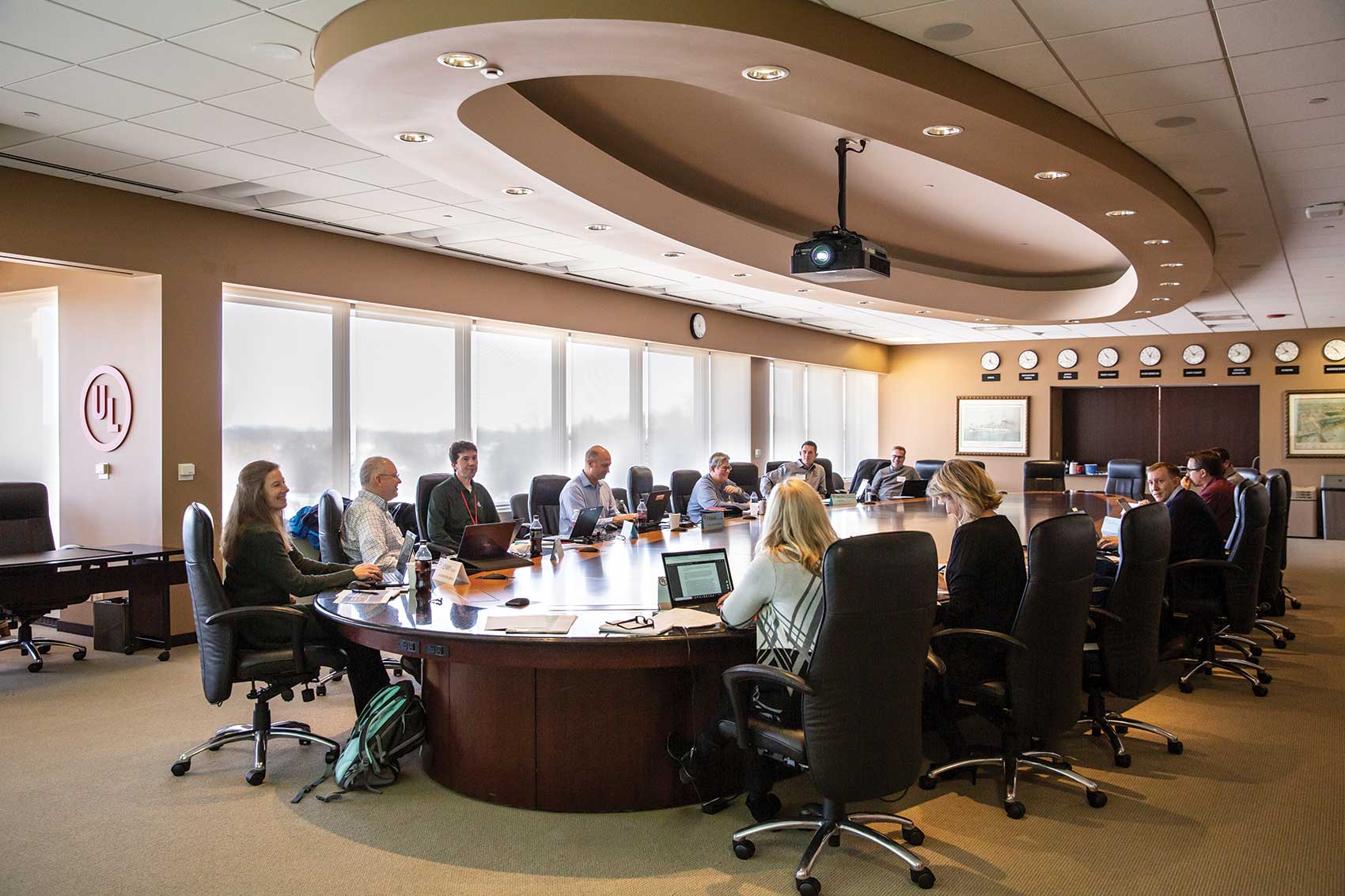Anyone who has served on an NEC code-making panel or a standards development organization’s advisory committee, knows how intertwined these two endeavors are. Simply being a user of the NEC or any third party product standard, one sees that the interrelationship between a product standard and the applicable installation code is paramount to safety and well-known. However, the process whereby one standard can influence the other can often be fuzzy and downright confusing. This article will examine by example several recent interactions between installation code and product standards.
It is appropriate for standards to influence one another; however, many NEC code-making panels routinely reject proposals reasoning that certain requirements belong in product standards, while other panels include broad requirements that hopefully act as a catalyst to SDOs. It is this author’s opinion that broad product requirements (and some specific ones) do indeed belong in the NEC providing the impetus for the standards development process. However, the full set of specific product requirements are indeed the purview of product standards. As such, should the rules be changed to disallow the “end product standard” rejection reason? This author thinks so. Perhaps these examples provide insight leading to consideration. After all, in the end, it’s about electrical safety; where the rule resides and who gets to publish it are just bookkeeping.
Hair Dryers and Immersion Detection
Presently, NEC 422.41 requires that cord- and plug-connected freestanding hydromassage units and hand-held hair dryers contain protection should those products become immersed. It further states that the requirement is with the product in the “on” or “off” position. This seems like an odd requirement for the NEC; however, the history will explain much.
One might question the need for this requirement since bathroom receptacles are required to be protected by ground-fault circuit interrupters (GFCIs). The GFCI requirement has been in the NEC since 1975. Thankfully the current requirement rightfully considers older buildings without such GFCI provision. By requiring the protective device on the hair dryer, one is assured that protection is available, even in older homes.
According to Consumer Products Safety Commission hazard data referenced in the 1989 technical committee documents [(TCD), now called the report on comments (ROC)], fifteen to twenty electrocutions per year were reported since 1977. These electrocutions were reported as a result of hand-held hair dryers falling into occupied bathtubs. Considerable discussion took place as well as the realization of the obvious need for some sort of protective device on appliances subjected to immersion.
In September of 1988, the seventh edition of UL 859 included an exposure to water test, which was to be effective April 1, 1990. This test checked for leakage current in a metal tub containing very conductive water. The results were considered acceptable if the leakage current was less then 5 milliamperes. However, the test description included the following sentence, “Any on-off switch provided is to remain in the off position during the test.” This seemed very curious. I guess the date of April 1st may have had some significance.
This test requirement led to some hair dryer manufacturers installing so-called “waterproof” switches in hand-held hair dryers. This insulated any live parts from contacting the water provided the switch was in the off position. Obviously, there was no protection when the hair dryer was turned on.
Since the safety hazard still existed, an NEC proposal was submitted and recorded in the 1989 TCR (now called the ROP). This proposal called for immersion protection with the switch in the “on” or the “off” position. The proposal was accepted by a 9 to 1 vote. Later in the 1989 TCD, the CPSC made a public comment recommending the acceptance of the proposal. The proposal was subsequently unanimously accepted, during the comment stage.
The first Code requirements came in NEC–1990, under 422-24, whereby protection for personnel was required for hair dryers and hydro-massage units. This requirement did not specify any particular technology nor any specific test. It simply specified personnel protection be built into the products, and function in the “”on”” or the “off” position of the switch.
UL 859, dated January 25, 1990, was modified to require hair dryers that incorporated immersion detectors be required to trip when immersed regardless of the switch position. Later, the January 11, 1991, requirement for hair dryer immersion protection maintained the upgraded requirement for immersion protection in both the on and off condition and further began to mention protective devices like GFCIs and immersion dectection circuit interrupters (IDCIs). Some time later, ALCIs were also utilized.
In this example, the product requirement came first. However the obvious deficiency in the requirement necessitated the NEC proposal, which some may say was needed to nudge the product standard further. So in this case the egg became a chicken which hatched yet another egg.
High Pressure Washers and GFCI Protection
The present NEC 422.49 requires all single-phase, cord- and plug-connected high-pressure washers rated 250 volts or less, to incorporate a GFCI within 300 mm (12 in.) of the plug cap. This offers protection to the length of cord (which can be considerable) as well as the pressure washer since the requirement mentions GFCI protection at personnel protection levels (0.005A). This requirement first appeared in NEC–1990 as 422-8(d)(3). The GFCI was required in the cord just as the present requirement. However, an exception existed which negated the GFCI requirement (in the supply cord) as long as the pressure washer was rated at over 125 V, double insulated and contained a warning tag indicating that the pressure washer must be plugged into a GFCI-protected receptacle.
NEC–1993 added two more exceptions and modified the original one. The original exception was modified to eliminate the 125-V rule. Section 422-8(d)(3) exception #2 was added which exempted 3-phase pressure washers, and exception #3 also exempted washers rated over 250 V. These changes were initiated by a panel proposal logged in as 20-15. It is interesting to note that the inclusion of a safety device or the type of insulation system is usually a product standard issue; but here, the panel had no problem including product standard rules within the body of the NEC. Of additional significance is that during the comment stage (20-12), Mr. Bernardo opined that the proposal (three exceptions) should be rejected as the rule would be unenforceable and that it more properly belongs in the product standard. The panel statement read, “CMP20 continues to believe this section of the Code is necessary to recognize known and demonstrated advances in technology.” My, my! Do not product standards also have the ability to recognize advances in technology as well?
If that was not enough, NEC–1996 changed the exceptions once again. This Code continued the GFCI rule in 422-8(d)(3) and maintained the exceptions for 3-phase and units rated over 250 V. It also eliminated the exception for double insulation accompanied by a warning tag.
It is interesting to note that proposals to eliminate the double insulation exception (20-7 and 20-17) were both rejected. The panel statement included the comment which was in favor of continuing with the exception for double insulation. The panel opined, “The exception recognizes the added safety of double insulated spray washers by allowing the GFCI to be located remote from the unit. This would discourage the manufacture of double insulated units.” These two extracted sentences speak volumes about the influence that the Code has on product standards. Take a second look at the words. “This would discourage the manufacture of double insulated spray washers.” Here we find not only end-product standard requirements, but purposeful influence being applied to a product’s standard and its design. Good arguments were made indicating expected ambivalence toward a warning label and the inappropriateness of allowing double insulation as an alternative to GFCI protection, especially in a wet environment. In the comment stage, exception #3 was eliminated. Of course the product standard followed suit and incorporated these requirements. So in this case, like the previous example, the egg came first, went through a few DNA replications, and then, in the end, became a chicken.
Recessed Fixtures and Thermal Protection
The next example is similar in history and consequence. It goes like this: During the late 1970s and early 1980s, many homeowners were insulating their homes due to spiraling energy costs. Many had “”blown-in”” insulation installed in their attics. While the insulative properties of this material were admirable, the fire-retardant properties were lacking. This led to fires which were blamed on recessed lighting fixtures (hi hats). During that period it was politically correct to call a fixture, well, a fixture. Upon further investigation, it was determined that the blown-in insulation may not have been installed correctly. This amounted to the fixtures being buried in the insulation. These fixtures were not listed for direct burial in insulation and many were marked, cautioning to keep insulation away from the fixture. It is surmised that these warnings were not heeded.
The present Code requires in 410.65(C) that recessed incandescent fixtures incorporate thermal protection. There are some special exceptions and rules where specially designed or installed recessed fixtures are not required to be thermally protected. For the most part, residential types are also required to be thermally protected. The UL standard has a complete test program that tests for the thermal protector’s ability to trip when buried in insulation and, also, not trip when installed in a tight, but un-insulated ceiling.
This rule first appeared in NEC–1981 with the special effective date of April 1, 1982. This, in effect, gave an additional year and one-half for fixture manufacturers to design and certify their thermally protected fixture. Of course, UL developed specific requirements which were, in turn, included in their fixture standard. I chose this example as it once again illustrates that the egg precedes the chicken, and, more importantly, points out a very useful tool. Namely, the delayed implementation date. This is an excellent tool that can be used by NEC panels when a proposal is appropriate and becomes a rule, but industry and product certifiers may not be quite ready to supply and certify products. Again, the egg surely precedes the chicken, but this important tool allows for a longer gestation period.
The Other Side of the Coin
One example mystifies and confounds even the most scholarly of Code experts. Consider the rules of 210.21(B)(2) and 210.23(A)(1) to which collectively many people refer to as the 80 percent rule. These rules are clear in addressing cord- and plug-connected loads supplied by a receptacle. The rule states in table 210.21(B)(2) that the maximum cord- and-plug-connected load on a 15-ampere branch circuit shall not exceed 12 amperes. Section 210.23(A)(1) goes further and states that the rating of any single cord- and plug-connected utilization equipment shall not exceed 80 percent of the branch circuit rating. Sounds clear enough. Maybe not. Consider a 1500-W hand-held hair dryer rated 125 V. This dryer theoretically draws 12 amperes. All is well, Code rule is satisfied and everyone can sleep. Enter the 1850-watt hand-held hair dryer. At 125 V this theoretically draws 14.8 amperes. How can these products achieve a listing and be used on a 15-ampere branch circuit? Also, how can they be rated at 1850 watts with a 15-amp plug cap? The Code rules seem clear enough. No product standard to deal with? Or is there?
UL 859, the standard that covers hand-held hair dryers, permits listing of 1850-watt hand-held hair dryers with 15-amp plug caps. How? Many theories exist on how this has been allowed to happen. This author has spoken to a few folks involved with the process and it comes up the same each time. “I don’t know.” If you really want a flavor for just how absurd this has become, take a look at proposals 2-189 and 2-190 where the panel statement seems real clear, yet the product standards remain the same and allow listings of 1850-watt products with a 15-amp plug cap. In this case, there was an egg, a clearly identified egg, but this particular egg was never sat on by a hen and never became a chicken.
Air Conditioners and Arcing Protection
There is another case worth noting. Section 440.65 of NEC–2002 requires room air conditioners to incorporate AFCIs or LCDIs in their power cord or in the plug cap. Pretty straight forward, yet this past summer I purchased an 8000-BTU room air conditioner that was manufactured in 2002 and it did not have one of these safety devices. How is this?
To the best of my ability to ascertain, the product standard has not yet incorporated the requirement that became Code on January 1, 2002. The UL standards making panel responsible for the air conditioner standard had voted to, in fact, include such requirements, yet the requirement has not been implemented as of this writing. Further confounding the issue is the statement in the standard that speaks of being in league with the NEC. In this case, once again, a very clear and identifiable egg appeared, but, alas, once again, no hen. Rather, a nasty old fox was seen near the egg and nary a hen to be found.
Conclusion
Many more examples could be researched, but the outcome would be the same. Simply, the NEC is full of product requirements and should continue to include requirements. It is appropriate that an NEC rule migrates into the product standard, and, in turn, makes specific product requirements that are in league with the Code rule. This is a self-checking method for increasing product safety and should be continued. Consider a product that does not obtain an NRTL listing. This is permitted in our system. So, then, the product standard would not apply—but the Code does. So by having product specific rules in the Code, when appropriate, this often overlooked loophole can be closed when safety concerns rise to a level meritorious enough for a Code rule.
It is this author’s opinion that the NEC rules which each panel follows should be amended to prohibit automatic rejection of proposals along with panel statements that claim the rule belongs in the product standard. To further close the safety gap, product standards that purport to be in agreement with the NEC, should be required to adopt the Code rules upon publication. After all, the Code process is transparent and available to everyone long before the Code’s ultimate effective date.














Find Us on Socials